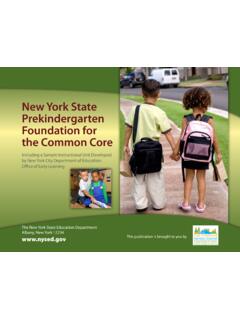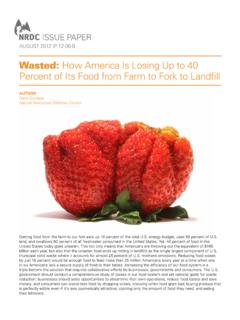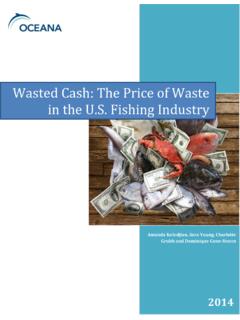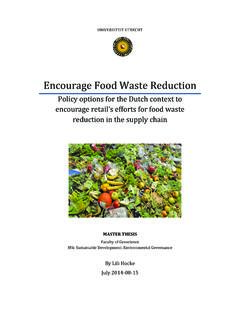Transcription of EMPTY BEDS WASTED DOLLARS - NYS Council on Children …
1 EMPTY BEDSWASTED DOLLARST ransforming Juvenile Justicecover photo: EMPTY beds at the Auburn Residential Center, a non-secure facility for girls aged 13-17years old. It has 24 beds , but only two Children . The cost to New York State taxpayers tomaintain each of these EMPTY beds is $100,000 to $200,000 OF EMPTY beds ,TAXPAYERS $200,000 COULD PROVIDE NEW YORK S Children WITH: 10,000 copies of Harry Potter and the Deathly Hallows by Rowling 12,277 copies of Merriam-Webster s Collegiate Dictionary, 11th edition(hardcover) Six first-year New York schoolteachers Six caseworkers Four undergraduate degrees at the State University of New York1 NEW YORK OFFICE OF Children & FAMILY SERVICESACCELERATING TRANSFORMATION OF STATE JUVENILE JUSTICE SYSTEMA gency Closing, Reducing, or Merging Underutilized Residential Facilities toImprove Services to Children and Help Prevent Youth CrimeEMPTY beds , WASTED DOLLARSNew York State Office of Children & Family ServicesCommissioner Gladys Carri n in January announced theclosing of six underutilized residential facilities as part ofan ongoing restructuring to significantly improve servicesto troubled agency is closing the Adirondack WildernessChallenge in Clinton County, Auburn Residential Centerin Cayuga County, Brace Residential Center in DelawareCounty.
2 Gloversville Group Home in Fulton County, GreatValley Residential Center in Cattaraugus County, andthe Pyramid Reception Center in The also is reducing by half the number of beds at theLansing Residential Center in Tompkins County. Theprogram at the Adirondack Wilderness will be mergedinto the Adirondack Residential Center, and the intakefunctions at Pyramid will be relocated to the EllaMcQueen Residential Center in changes take effect on Jan. 11, 2009, consistentwith a state law that requires a 12-month notificationprocess prior to the closure of residential facilities in theOCFS are approximately 2,000 Children in New YorkState s juvenile justice system, and most of them arebetween 12 and 18 years old. A few are as young as were all under the age of 16 when they committedan act that would have been a crime if committed by closings, reductions, and mergers are at non-secure and limited-secure facilities housing childrenadjudicated as juvenile delinquents by the family vast majority of the Children in these facilities wereplaced in the system for committing misdemeanors.
3 Noyouth will be released prematurely as a result of facilities housing juvenile offenders, those childrensentenced for committing felonies, will not be directlyimpacted by these facility ongoing restructuring is driven by a widely sharedrecognition among Children s advocates and legal expertsthat the needs of New York s Children , families, andcommunities are not adequately addressed by the juvenilejustice system. Since 2002, OCFS has reduced 379 bedsin its residential facilities. With these closings, the totalreduction of beds rises to of the Children in these facilities have mental healthissues, learning disabilities, and substance and alcoholabuse problems and come from some of the poorestcommunities in the state. Additionally, it has beenestimated that 80 percent of these Children who enterthe juvenile justice system return or go to prison withinthree years of their release.
4 What these Children need is intervention and support, said Commissioner Carri n. This includes an education,job training, and mental health and substance abuseservices to support their rehabilitation and return to thecommunity. It is our responsibility to prepare them for asuccessful transition to adulthood. In addition to the system s failure to address thesechildren s needs, it is also wasteful. Nearly a dozen ofthe state s youth facilities are operating under 40 percentof capacity. At some facilities, a quarter of the beds arefilled. Instead of continuing to pour money into this brokensystem and confining these Children to facilities hundredsof miles from their homes, OCFS has aggressively beenmoving toward more community-based alternatives toincarceration where these Children can maintain andstrengthen connections with their families and thesignificant adults in their lives, the Commissioner programs, such as those in Missouri,have proven to better prevent youth crime and to droprecidivism rates to as low as 30 percent at a fractionof the cost New York State is currently paying to maintainempty new paradigm includes placing an emphasis onworking with families from the first day a child entersthe state juvenile justice system.
5 Just last year, the agencyenhanced staffing by 218 new positions, including 362mental health professionals, to better meet these Children closings, reductions, and mergers will result in $16million in annual OCFS Office of Human Resources, the stateDepartment of Civil Service, and the state Departmentof Labor have organized teams to assist the employeesat these impacted facilities to identify and secure positionsat other facilities or other state of Civil Service Commissioner Nancy said, Our goal at Civil Service is to find analternative State employment opportunity for every oneof the affected workers. We have experience at this andwill work closely with OCFS, other State agencies, andemployees themselves to make this transition as smoothas possible.
6 EMPTY beds , WASTED DOLLARSThe Office of Children and Family Services missionis to promote the well-being, safety, and permanencyof New York s Children and families by setting andenforcing policies, building partnerships, andfunding and providing high-quality services. Theagency is responsible for foster care; adoption;adoption assistance; child protective services,including operating the Statewide Central Registerof Child Abuse and Maltreatment; preventive servicesfor Children and families; services for pregnantadolescents; child care licensing and funding; andoperating the state juvenile justice programs. Theagency also is responsible for protective programsfor vulnerable adults, including adult protectiveservices and the Commission for the Blind andVisually 8, 2008 The time has come to fix New York State s juvenile justice system.
7 Not tomorrow, notnext year, but advocates have pleaded for changes to the system for a long time. When GovernorEliot Spitzer named me commissioner of the state s Office of Children and Family Serviceslast January, together we agreed that assessing the system s weaknesses and strengthswould be a top spent the last year visiting facilities across New York, meeting with young adults,families, judges, and the experts. What I found were troubled Children overwhelminglypoor, mostly African-Americans and Latinos housed hundreds of miles from their familiesand neighborhoods, and far from are charged with insuring the safety of our communities and some of these 2,000children did commit serious offenses. But the majority of them are not hardened were all under the age of 16 when they committed an act that would have been acrime if committed by an adult.
8 Most of them are between 12 and 18 years old. A few areas young as approach to addressing the needs of these Children must draw on the currentresearch on adolescent brain development and the undeniable fact that young people havethe ability to change their these young people need is intervention and support. This includes an education,job training, and mental health and substance abuse services to support their rehabilitationand return them to the community. It is, after all, our responsibility to prepare them for asuccessful transition to that s not what the state s being doing. Instead, it is spending hundreds of millionsof DOLLARS annually on a system that does not work. A system that was founded on the ideathat if the state took these Children away from their families and the neighborhoods wherethey got into trouble, then something magical would happen to turn their lives , it didn t happen that state residential facilities, the focus has been on safety and control and not onproviding the developmentally appropriate services young people need to address theirtrauma, addictions, or deficits or education and said, there have been some half the Children who enter state facilities are assessed below grade level onreading and math tests; by the time they are released, nearly half are testing at the nextgrade level.
9 Those Children who enroll in GED programs while in custody are earningdegrees at a 75 percent rate, compared to 53 percent in NY s general population. And justlast month, in one of our newest programs, 13 Children who took a three credit psychologyclass offered by Columbia-Greene Community College earned 12 A s and one , these successes are the exception and not the many as 80 percent of the Children who enter the system come back to us or go toprison within three years. That s grossly unacceptable in any system, especially comparedto alternative community-based programs in states like Missouri that have a 30 percentrecidivism York StateOffice ofChildren & SpitzerGovernorGladys Carri n, View Office Park52 Washington StreetRensselaer, NY 12144An Equal Opportunity EmployerEMPTY beds , WASTED DOLLARS4 Even more astonishing, as the number of Children in custody has dropped largely due to the efforts of localcounties we continue to pay for EMPTY beds at annual costs from $140,000 to $200,000 each.
10 Nearly a dozen ofthe state s youth facilities are operating under 40 percent of capacity. At some facilities, as few as a quarter of thebeds are of continuing to pour money into this system, we are going to invest our tax DOLLARS in programs that haveproven empirically to better prevent youth crime, including identifying and helping these Children before they comeinto the system at a fraction of the current includes supporting a community-based system where these Children can maintain and strengthen connectionswith their families and the significant adults in their lives. At the New York State Office of Children and FamilyServices, we are already placing emphasis on working with families from the first day a child enters the system. Justlast year, we hired 218 new staff, including 36 mental health professionals, to better meet these Children s these Children have completed residential treatment, we then need to transition them into aftercare and re-entry programs that support them and their families, train them for real jobs, and provide continued access toeducation in their local high schools, community colleges, or universities.












